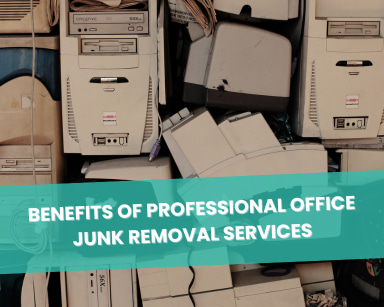A Step-by-Step Guide: Ensuring Success in Selling Liquidation Pallets
Table of Contents
The Growing Phenomenon: Selling Liquidation Pallets
In recent years, as businesses grapple with fast-changing market dynamics, there’s been an upward trend in the move to sell liquidation pallets. This strategy has become more than just a way to offload excess inventory, it’s transformed into a lucrative avenue for businesses to rejuvenate their financial health and keep their storage agile.
A Deeper Dive: Why Businesses Choose Liquidation
- Minimizing Losses: When products sit in storage, they incur costs and might even become obsolete. Liquidation helps mitigate these losses.
- Optimizing Warehouse Space: By selling off excess inventory, businesses can better manage their storage and reduce overheads.
- Sustaining Brand Value: Selling outdated or surplus goods through regular channels might dilute a brand’s perceived value. Liquidation offers an alternative route, preserving brand integrity.
Debunking Myths: Does Walmart Sell Liquidation Pallets?
One of the questions buzzing in the industry circles is, “does Walmart sell liquidation pallets?” The answer might surprise many. While Walmart is a retail behemoth, it does, in fact, engage in the sale of liquidation pallets through specific channels, like the Walmart Liquidation Auctions platform. The move is strategic, allowing them to sustain their expansive inventory without drowning in overstock.
Profit Perspectives: How Much Can You Make Selling Liquidation Pallets
It’s the golden question, isn’t it? The earnings from liquidation pallet sales vary based on factors such as product type, market demand, and strategic pricing. On average, sellers can expect a return of 50-75% on the retail value. For instance, if you’ve products originally valued at $10,000, you might retrieve $5,000 to $7,500 from a liquidation sale. But remember, the right strategy and presentation can tip this scale favorably.
From Novice to Expert: Building Trust in Liquidation Sales
Trust is crucial in the liquidation business. A few pointers for budding entrepreneurs:
- Authenticity is Key: Always be clear about the condition of the goods. Transparency breeds trust.
- Engage With Customer Feedback: Use reviews and feedback to refine your selling approach.
- Stay Updated: Continuously update your knowledge about market trends to stay ahead of the curve.
Navigating Challenges in the Liquidation Market
The liquidation market isn’t without its trials. From determining the right price to understanding market fluctuations, sellers often face a labyrinth of decisions.
Grasping The Real Worth of Your Pallet
Understanding your goods’ real worth is paramount. Overpricing can repel potential buyers, while underpricing can hurt profit margins. Delve into market research, understand competitor pricing, and position your goods strategically.
Aspects of Selling Liquidation Pallets
Liquidation pallet selling is not just about offloading stock. It’s about the stories behind each product, the emotions they evoke, and the problems they solve.
Ethical Considerations in Liquidation
Transparency isn’t just a word, it’s a responsibility. Sellers must ensure that they communicate the exact condition of products, especially if they’re not in pristine shape. In the long run, this builds trust and solidifies buyer relationships.
The Environmental Side of Liquidation
The sustainable aspect of liquidation sales is often overlooked:
- Reduces Waste: Instead of sending unsold goods to landfills, they get a new lease on life.
- Encourages Second-Hand Markets: By providing products to secondary markets, liquidation sales promote a culture of re-use.
- Energy Conservation: Manufacturing new products consumes more energy than reselling existing ones. By selling liquidation pallets, we indirectly save energy.
International Liquidation Pallet Selling
Ever considered casting your net wider? International markets offer untapped potential but come with their set of challenges – from understanding tariffs and trade regulations to cultural nuances in business interactions. An example in point is Walmart’s foray into the Indian online marketplace, Flipkart.
Leveraging Technology to Boost Liquidation Sales
As the world continues its digital march, the liquidation market isn’t far behind. Embracing technology can mean the difference between a sale and a miss. For example, using predictive analytics to identify potential buyers or automating customer engagement.
Real-time Bidding Platforms and Their Rise
Digital auction platforms have made it easier for sellers to reach a broader audience. They provide a dynamic environment where buyers can bid in real-time, creating a sense of urgency and competition that often works in the seller’s favor. It’s like a modern version of liquidation pallet trading because buyers and sellers can connect quickly and easily.
The Road Ahead: Future Trends in Liquidation Pallet Selling
With the ever-evolving landscape of changing consumer behaviors, the exponential growth of e-commerce, and the dynamic shifts happening on a global scale, the liquidation market is poised for a fascinating transformation. It’s crucial to remain curious, embrace a mindset of adaptability, and constantly be prepared to pivot in order to thrive in this rapidly changing environment.
Final Thoughts: Turning Challenges into Opportunities
Every challenge in the liquidation market is an opportunity in disguise. Whether it’s a fluctuating market or evolving buyer behaviors, the key lies in understanding these shifts and molding strategies accordingly. By placing the buyer at the center of every decision, businesses can ensure success in their journey by selling liquidation pallets.
With a keen understanding of these intricacies, businesses are not just selling products, they’re weaving stories, building relationships, and setting the stage for a sustainable future.










